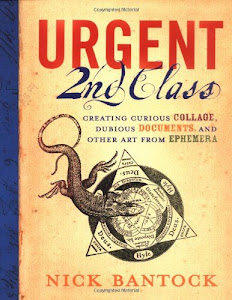
Plains Indians Regalia & Customs
Catégorie: Beaux livres, Informatique et Internet, Cuisine et Vins
Auteur: Tennessee Williams, John Escott
Éditeur: Sean Gordon Murphy
Publié: 2019-03-02
Écrivain: Thomas Brussig
Langue: Hindi, Chinois, Hollandais, Tagalog
Format: Livre audio, eBook Kindle
Auteur: Tennessee Williams, John Escott
Éditeur: Sean Gordon Murphy
Publié: 2019-03-02
Écrivain: Thomas Brussig
Langue: Hindi, Chinois, Hollandais, Tagalog
Format: Livre audio, eBook Kindle
Chippewa (Objiwe) Tribe: Facts, Clothes, Food and History - · Eastern Woodland Indians Cultural Group and the Chippewa (Objibwe) tribe : What clothes did the Chippewa wear? The pictures on this page show a variety of the different types of clothes worn by the Chippewa tribe that were dictated by climate and customs. The Chippewa wore breechcloths in the summer and in cold climates they wore fringed, decorated tunics, high moccasins and leggings and
Ceremonies and Socials – Our Stories - Cook, Johns, and Wood (2005) give an example: “while the use of Plains-style regalia dominates many powwows, movement is growing in the Eastern United States toward the use of Eastern Woodland styles that are tribally specific when possible” (p. 215). Toelken (1991) describes powwow today as “essentially a social gathering at which Indian people from several different tribes dance
10 Fascinating Facts About the First Americans | Britannica - Earth and skin lodges and tepees were used by plains and prairie tribes (and preferred by Hollywood). Some of the Pueblo Indians of the Southwest built flat-roofed, often multistoried houses. The Northeast Indians lived in barrel houses. Clothing likewise varied with native groups, as did crafts, weapons, and tribal economic, social, and religious customs
Apache - Wikipedia - Plains Apache hunters pursued primarily buffalo and deer. Other hunted animals were badgers, bears, beavers, fowls, geese, opossums, otters, rabbits and turtles. Clothing. Influenced by the Plains Indians, Western Apaches wore animal hide decorated with seed beads for clothing. These beaded designs historically resembled that of the Great Basin
Plains Indians - Wikipedia - Plains Indians or Indigenous peoples of the Great Plains and Canadian Prairies are the Native American tribes and First Nation band governments who have historically lived on the Interior Plains (the Great Plains and Canadian Prairies) of North hunting-farming cultures have lived on the Great Plains for centuries prior to European contact, the region is known for the horse
Facts for Kids: Pawnee Indians (Pawnees) - Pawnee Indian Fact Sheet. Native American Facts For Kids was written for young people learning about the Pawnee Indian tribe for school or home-schooling reports. We encourage students and teachers to visit our main Pawnee site for more in-depth information about the tribe, but here are our answers to the questions we are most often asked by children, with Pawnee pictures and links we believe
Native Americans Facts for Kids: An American Indian - American Indians of Northern California, the Pomo are known for their fine basket arts. Poncas The Poncas are Plains Indians of the prairie, who once relied on the buffalo herds for food. Potawatomi The Potawatomi were traditionally the fire-keepers in the powerful Three Fires alliance of Indians. Powhatans
Primary Sources – Native American History - “Nowhere did Indians wear headdresses and hunt buffalo from horse back; the horse-and-buffalo culture of the plains Indians developed much later, a by-product of contact with Europeans”. So just how important was the buffalo to the tribes of the Great Plains, the buffalo was everything. When the buffalo struggled the plains tribes struggled as well. The buffalo is not only the main staple
Bio of Cynthia Ann parker, captured and raised by the - As buffalo hunters poured onto the plains, destroying the Indians' chief source of food, the Comanches under the leadership of Quanah Parker were forced to take decisive action. Determined to maintain their independence, or at least their survival as a people, the Quahadis, under the guidance of Quanah and a medicine man named Isa-tai, formed a multitribal alliance dedicated to killing the
Facts for Kids: Crow Indians (Crows) - Here is a site about the symbolism of Plains Indian war shirts, and some photos and links about Native American regalia in general. Crow Indian leaders sometimes wore the long Indian warbonnets that Plains Indians are famous for. Traditionally, Crow people only cut their hair when they were in mourning. Crow men sometimes made their hair even
[audible], [goodreads], [read], [online], [pdf], [audiobook], [download], [english], [kindle], [free], [epub]


















0 komentar:
Posting Komentar
Catatan: Hanya anggota dari blog ini yang dapat mengirim komentar.